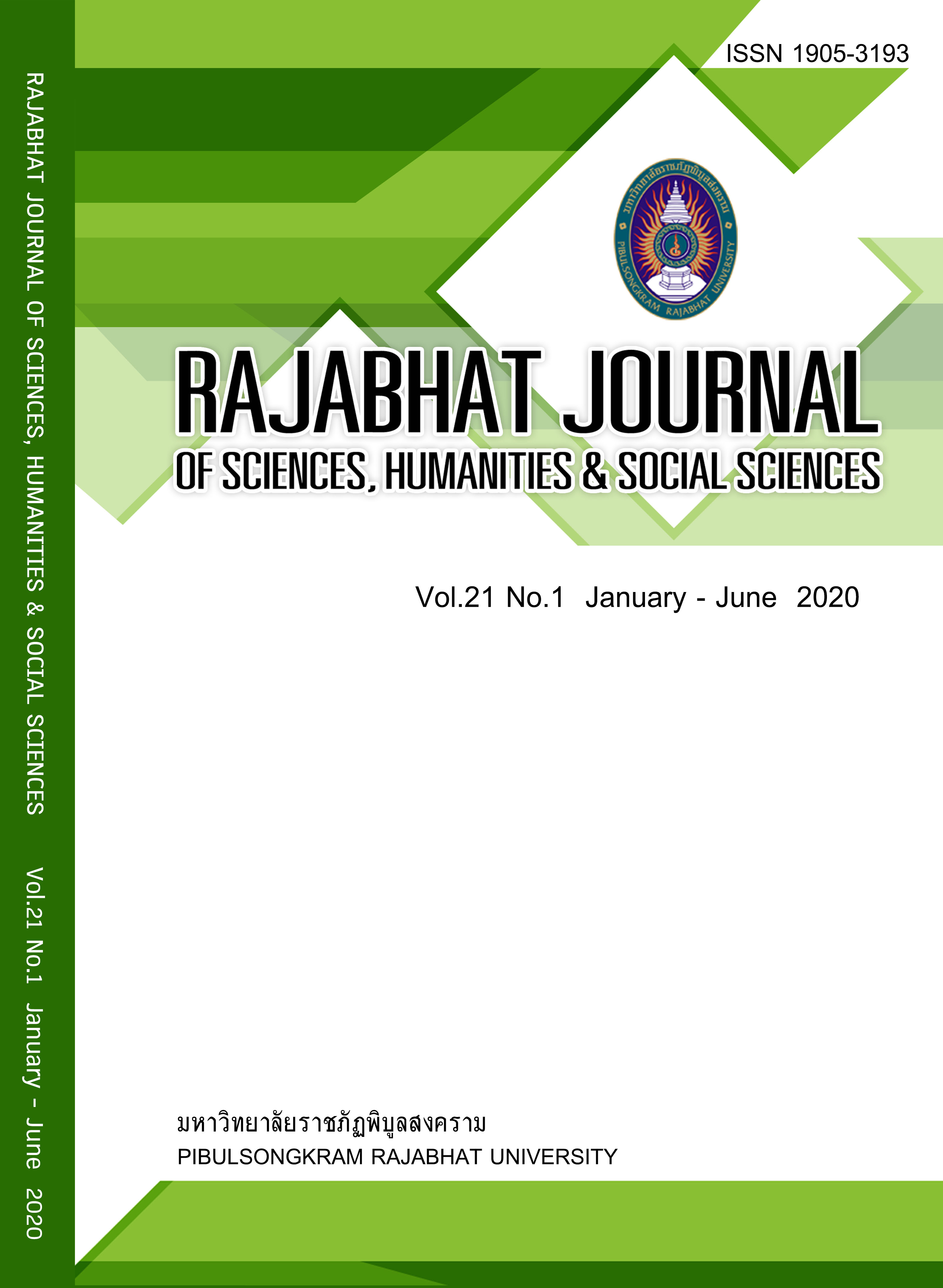PRODUCT DEVELOPMENT OF LONGAN-ROSELLE JAM
Keywords:
Longan, Roselle, Inulin, Longan-Roselle JamAbstract
This research attempted to develop longan-roselle jam. Jam was made with longan pulp contents of 50, 62.5, and 75% and compared. Results showed that the most preferred sensory qualities as achieved with formulations containing longan pulp content of 62.5%. The optimum formula of longan-roselle jam consisted of 35% longan pulp, 21% roselle, 28% sugar, 14% inulin, 1% pectin and 1% of 50% (w/w) citric acid solution. According to consumer tests, this product was acceptable to 94.2% of target consumer group. The color of longan-roselle jam in terms of L, a and b were 30.1, 0.2 and 3.3 respectively. The product had water activity 0.82, gel strength 177.85 g force, spreadability 3.85 mm, pH 2.82, titratable acidity (as citric acid) 1.04%, total soluble solid 66.2Brix and antioxidant activity by DPPH assay 84.50 mg Trolox equivalent/100 g. The energy, protein, fat, carbohydrate, total sugar, reducing sugar, moisture and ash of jam were 271.26 kcal/100g, 0.67, 4.14, 57.83, 59.36, 32.02, 36.77 and 0.59 g/100g, respectively. The product which inulin adding contained 0.92 g/100 g of dietary fiber content. The dietary fiber was increased only 1.6% of the Thai Recommended Daily Intake (Thai RDI) compared with jam without inulin added. When the product was analyzed for microbial quality, microbe content was shown to be less than 10 CFU/g for total plate count, yeast and molds, and less than 3.0 MPN/g for coliform bacteria and Escherichia coli.
References
2.AOAC. Official Methods of analysis. Arlington, VA: The Association of Official Analytical Chemists; 2010.
3.AOAC. Official Methods of analysis. Rockville, MD: The Association of Official Analytical Chemists; 2016.
4.Brand-Williams W, Cuvelier ME, Berset CLWT. Use of a Free Radical Method to Evaluate Antioxidant Activity, LWT-Food Science and Technology. 1995; 28: 25-30.
5.Chumsri P, Sirichote A, Itharat A. Studies on the optimum conditions for the extraction and concentration of roselle (Hibiscus sabdariffa Linn.) extract, Songklanakarin J. Sci. Technol. 2008; 30 (Suppl.1): 133-139.
6.DMSc & ACFS. Compendium of Method for Food Analysis. Bangkok: Department of Medical Sciences, National Bureau of Agricultural Commodity and Food Standards; 2003.
7.FDA BAM Online. Bacteriological Analytical Manual, 2001. Available at: https://www.fda.gov/food/laboratory-methods-food/bam-aerobic-plate-count. Accessed July 26, 2018.
8.FDA BAM Online. Bacteriological Analytical Manual, 2017. Available at: https://www.fda.gov/food/laboratory-methods-food/bam-4-enumeration-escherichia-coli-and-coliform-bacteria. Accessed July 26, 2018.
9.Glibowski P, Bukowska A. The effect of pH, temperature and heating time on inulin chemical stability, Acta Sci. Pol., Technol. Aliment. 2011; 10(2): 189-196.
10.Herb Information Office, Faculty of Pharmacy, Mahidol University. Roselle, 2017. Available at: https://www.medplant.mahidol.ac.th/pubhealth/hibiscus.html. Accessed August 27, 2017.
11.Martwanna C, Charoenrat S, Dulyaphat C. et al. Roselle herb, Kasikorn. 2002; 75: 16-19.
12.Ministry of Public Health. Notification of the Ministry of Public Health (No.182) B.E. 2541 (1998) Re: Nutrition Labelling, 2019. Available at: https://www.fda.moph.go.th/sites/food/law1/food_law.pdf. Accessed April 28, 2019.
13.Ministry of Public Health. Notification of the Ministry of Public Health (No. 213) B.E. 2543 (2000) Re: Jam, jelly, and marmalade in sealed containers, 2019. Available at: https://www.fda.moph.go.th/sites/food/law1/food_law.pdf. Accessed April 28, 2019.
14.Niwat C, Cheumchaitrakul P, Donlao N. Development of healthy fruit jam for Huai Nam Kuen Community Enterprise, Wiang Pah Pao District, Chiang Rai Province, Journal of Community Development and Life Quality. 2015; 3(2): 151 - 159.
15.Office of Extension and Training, Kasetsart University. Longan Planting, 2017. Available at: https://eto.ku.ac.th/neweto/e-book/plant/tree_fruit/puklamyai.pdf. Accessed August 27, 2017.
16.Rangkadilok N, Worasuttayangkurn L, Bennett RN. et al. Identification and quantification of polyphenolic compounds in longan (Euphoria longana Lam.) fruit, Agric. Food Chem. 2005; 53(5): 1387–1392.
17.Ray B, Bhunia A. Fundamental Food Microbiology. Boca Raton, Fla. : CRC Press; 2008.
18.Sriboonthai C. Morphological Characterization and Secondary Metabolites of Roselle (Hibiscus sabdariffa L.). Master of Science (Agricultural Technology), Faculty of Science and Technology, Thammasat University; 2016.
19.Sribusarakum A. Longan, more valuable than sweetness, 2017. Available at: https://www.pharmacy.mahidol.ac.th/knowledge/files/0407.pdf. Accessed February 12, 2019.
20.Tanjor S, Judprasong K, Puwastien P. Inulin and fructo-oligosaccharide for health benefits, Journal of Nutrition Association of Thailand. 2010; 45(2): 2-13.
21.Thai industrial standards institute. Thai community product standard (Jam) 342/2547, 2004. Available at: https://app.tisi.go.th/otop/standard/ standards.html. Accessed December 12, 2018.
22.The Bureau of Science and Technology Information Service, Department of Science Service. Anthocyanin, 2010. Available at: https://www.chaipanich.co.th/upload/file/file-20131122-691605.pdf. Accessed August 12, 2017.
23.United States Department of Agricuture (USDA). Introduction to the Microbiology of Food Processing, 2012. Available at: https://www.fsis.usda.gov/shared/PDF/SPN_Guidebook_Microbiology.pdf. Accessed April 30, 2019.
24.Vasudeva N, Sharma SK. Biologically Active Compounds from the Genus Hibiscus, Pharmaceutical Biology. 2008; 46(3): 145-153.
Downloads
Published
How to Cite
Issue
Section
License
Each article is copyrighted © by its author(s) and is published under license from the author(s).










